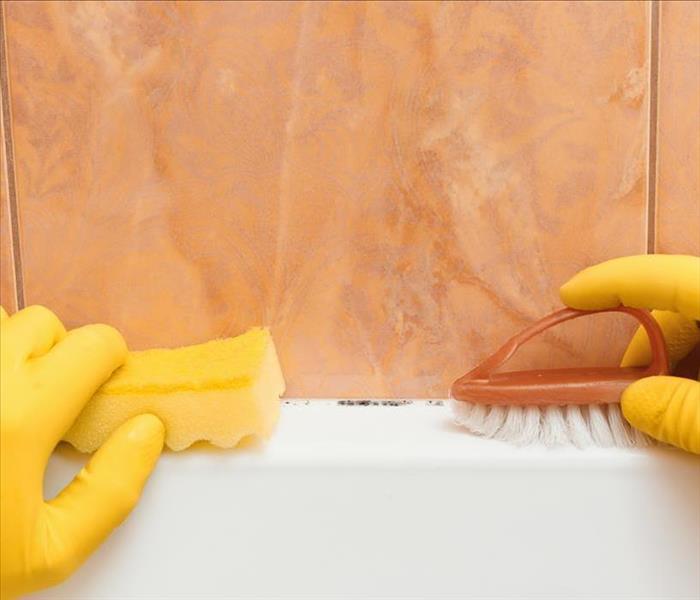Tips for a Mold-Free Bathroom
6/28/2021 (Permalink)
Mold is almost always unwelcome when it shows up in the bathroom. Unfortunately, the warm, humid environment of bathrooms makes them particularly inviting to mold spores. If you don't respond quickly to shower mold, the spores can spread easily to other parts of the room and throughout your home. The good news is that getting rid of black mold in the bathroom is possible.
Mold-Free Bathroom
Understand Mold's Ability To Survive
You may not see them, but mold spores surround you everywhere you go. They exist in nature and thrive in even extreme situations as long as they have access to moisture and food. Anything that contains organic material can feed mold:
- Paper
- Wood
- Drywall
- Carpet
- Fabrics
- Shower caulk
The caulk (and other porous) building materials absorb and hold water and soap residue. These provide plenty of food for black mold to survive.
Keep the Bathroom Dry
Reduce humidity in the bathroom with plenty of ventilation, dehumidifiers, and fans. Remove wet clothes and towels from the room and completely dry the walls of the shower and other surfaces in the room. Removing sources of food and moisture is an effective way to avoid moldy spots in the room.
Discourage New Growth
There are some cleaning products you can use to discourage mold growth. Before using ammonia or other chemicals, open windows to provide ventilation and wear a respirator to protect yourself from fumes. (Never combine ammonia and other chemicals.) Spray the product on visible mold and let it sit for several minutes. After about ten minutes, use a brush to scrub the problem areas. You should notice improvement. If shower mold remains in spite of your efforts, it's time to call mold remediation professionals to take care of the problem.
Mold problems, including shower mold, often go much deeper than you can see. The best way to be sure you've treated mold thoroughly is to hire professionals with the right training and supplies.



 24/7 Emergency Service
24/7 Emergency Service
